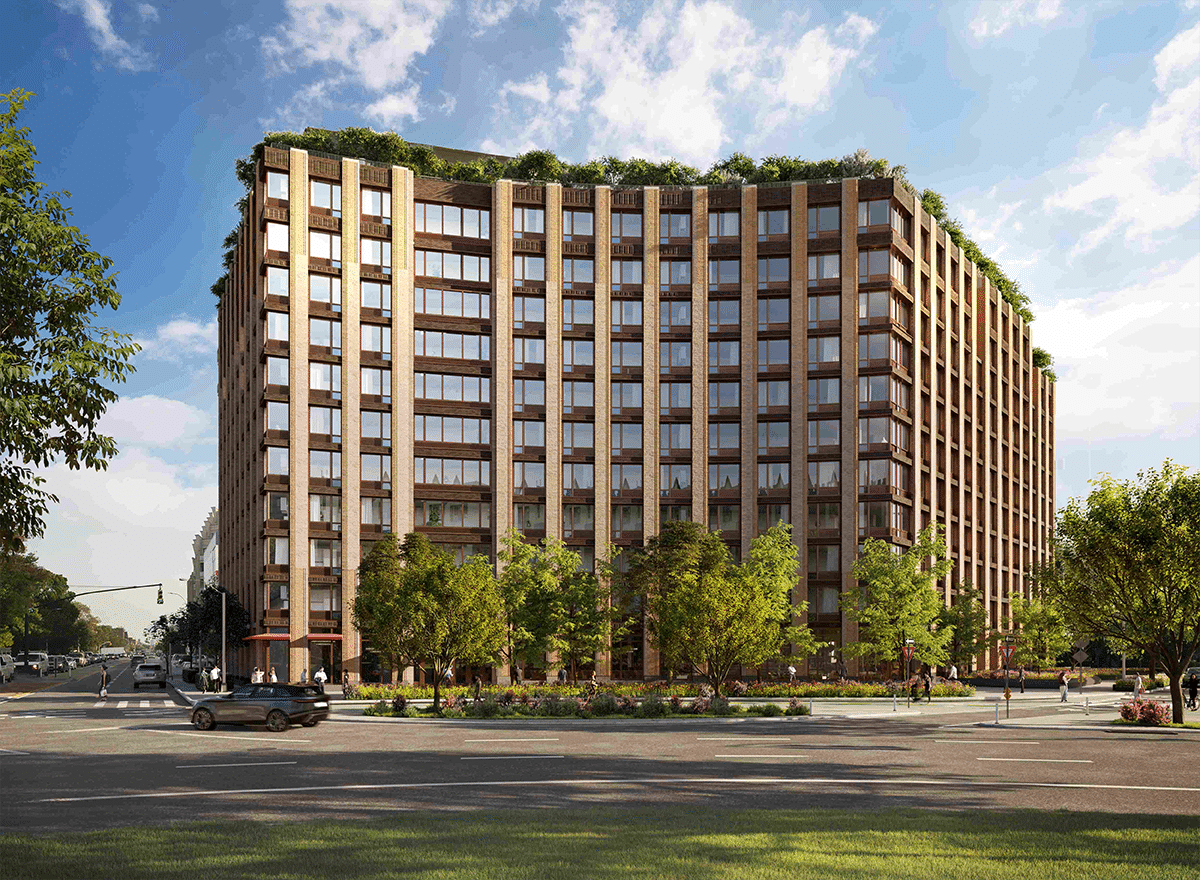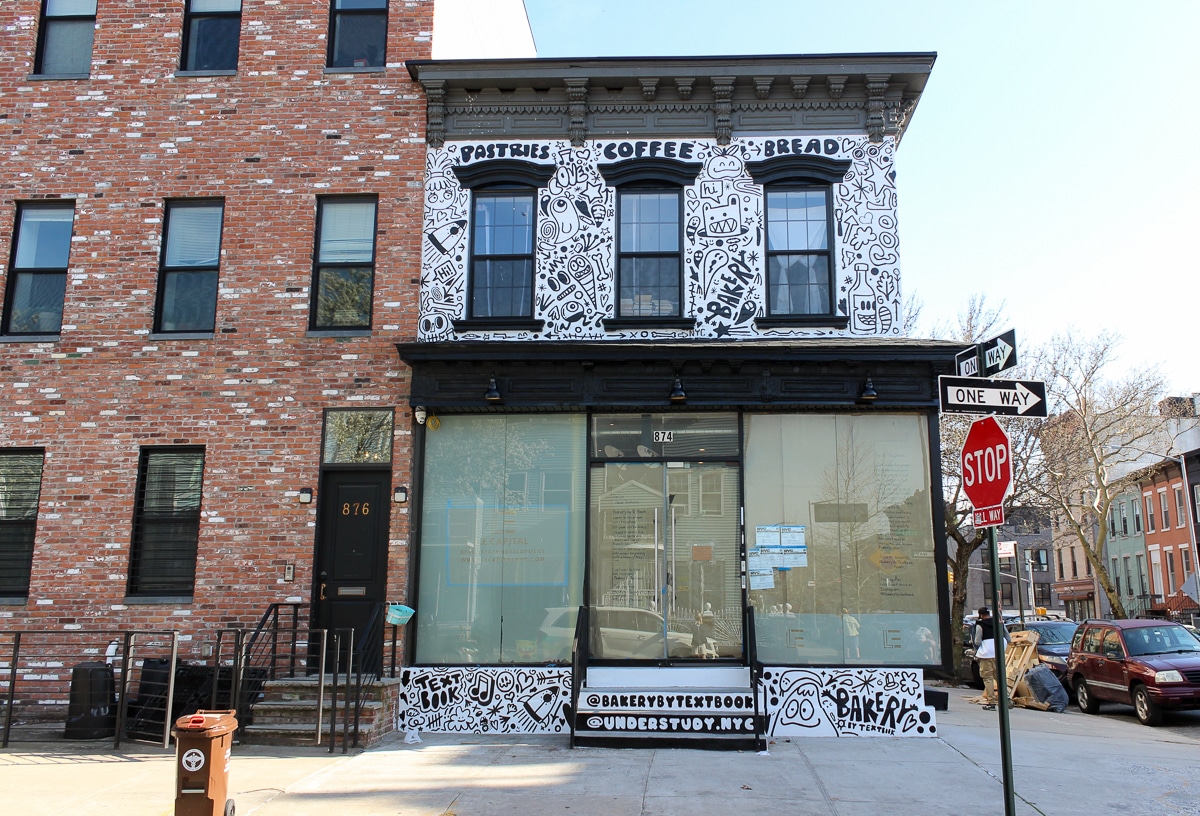Building of the Day: 11-13 Stuyvesant Avenue
Brooklyn, one building at a time. Name: Row houses Address: 11-13 Stuyvesant Avenue Cross Streets: Vernon and Willoughby avenues Neighborhood: Bedford Stuyvesant Year Built: late 1880s-early 1890s Architectural Style: Queen Anne Architect: Probably Theobald Engelhardt Other Buildings by Architect: Row houses, mansions, factories, breweries, churches and flats buildings all over Bushwick, Williamsburg and Eastern Bedford…

Brooklyn, one building at a time.
Name: Row houses
Address: 11-13 Stuyvesant Avenue
Cross Streets: Vernon and Willoughby avenues
Neighborhood: Bedford Stuyvesant
Year Built: late 1880s-early 1890s
Architectural Style: Queen Anne
Architect: Probably Theobald Engelhardt
Other Buildings by Architect: Row houses, mansions, factories, breweries, churches and flats buildings all over Bushwick, Williamsburg and Eastern Bedford Stuyvesant
Landmarked: No
The story: When the town of Bedford met the town of Bushwick at Broadway, the result was an interesting meeting of two very different street grids. All along this border, one can find these little triangles, truncated and odd shaped blocks. Except for the ones that are just too small to hold anything more than a small garden plot, they were all built on. Land is just too dear here in the Eastern District.
The former bank building on the corner, next door to No. 11, was built in 1909. Before that, the entire side of the street had row houses. This particular group of three was built as a group. The 1887 map of this block shows wood framed houses here, so these houses also replace earlier houses. Brooklyn just builds on top of itself over and over.
The group was more than likely designed by Theobald Engelhardt, the prolific architect of the Eastern District. His work can be found everywhere, including about a block away, up Vernon Avenue, in a group somewhat similar to this. Engelhardt was the son of a German immigrant builder who came to Williamsburg with the great groups of Germans escaping civil war in 1849. His father began building breweries in his new neighborhood, and Theobald followed in his footsteps, and surpassed him, becoming the most prominent architect in this entire area. He designed many rows of similar houses, his design “signature” being just inventive and creative with the popular design themes of the day.
The middle house is numbered 11B, which is unusual. When the number of houses is more than what the original street grid allows, the usual step is to call the house “11A.” I’ve never seen a “B” before. It would be interesting to know how that happened.
No. 11 has had the most history. In 1906, this was home to Dr. Peter Ray. He was said to have been the oldest living druggist in the state. He died here at home of a heart attack, and was found in his bathroom. He was 82. Dr. Ray was not only a druggist; he was a medical doctor, as well. He was born in New York City, and received his medical training at Bowdoin College in Maine. He continued at Castleton College in Vermont, and received his medical degree in 1850. He was one of the founders of St. Phillips Episcopal Church in Manhattan, and was a vestryman there up until his death.
Dr. Ray also was one of the founders of the Brooklyn College of Pharmacy, and a founder of the Kings County Medical Society. He was a master Mason, and a frequent commissioner and presenter at medical and pharmaceutical fairs and exhibitions. In 1903, the Kings County Pharmaceutical Society presented him with a gold medal for a lifetime’s work and success. His wife had already died before him, and at his own death he left a daughter who was also married to a doctor. The most amazing thing about Dr. Ray? He was African American. There are so many stories about amazing people yet to be told. GMAP
If you’d like to see more of the Eastern District, my tour partner Morgan Munsey and I will be leading a tour for the Municipal Arts Society in Eastern Bedford Stuyvesant. It’s tomorrow morning at 11 am, and tickets are still available on the MAS website. Hope to see you there.
Photo:Christopher Bride for PropertyShark)










What's Your Take? Leave a Comment